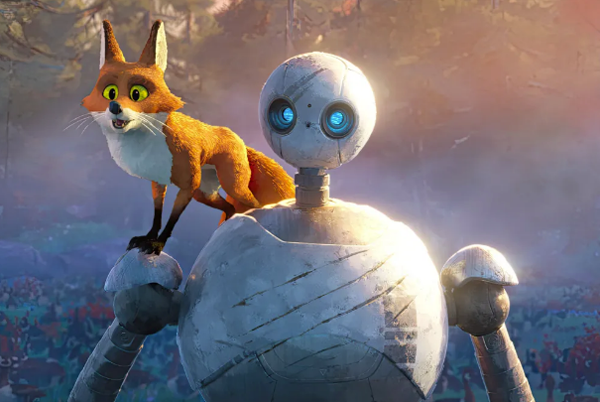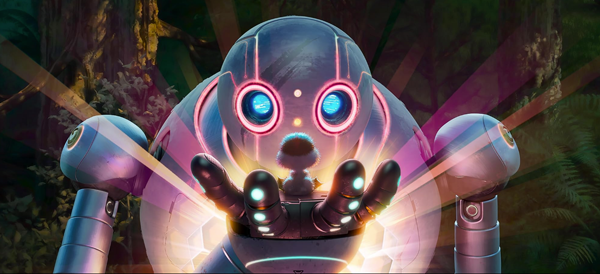
Why are animated robots always trying to make me cry? From The Iron Giant to Wall-E, these soulless hunks of metal and circuitry are the perfect mediums for us meatbags to teach ourselves more about . . . well, ourselves. Add The Wild Robot to that pantheon.
Based on the first book in a trilogy by Peter Brown, The Wild Robot follows ROZZUM 7134, Roz for short, a domestic helper robot whose shipping container crash-lands on a forest island. Roz (Lupita Nyong’o) awakens and begins searching for a task to complete, as per her programming, amidst the varied wildlife of the woods, all trying to kill and eat each other, as per their “programming.” When she rescues a gosling egg from a loner fox, she unwittingly finds a task that might be impossible to complete.
While the plot may follow a predictable path, writer/director Chris Sanders (Lilo & Stitch, How to Train Your Dragon) handles the material with impeccable pacing and tone. Roz’s found family on the forested island evokes as many joyous chuckles as it does reluctant tears, all while organically exploring multiple themes—from the aforementioned found family to being an outcast, from what it means to be a mother to using kindness as a survival method, and more. And though the dramatic dialogue can be a little “on the beak” at times, I can’t deny that this cynic’s hardened heart was moved more than once.
Where The Wild Robot really comes together is in the synergy of its voice-actor performances with its art direction and animation. Lupita Nyong’o deftly rides the line between cold machine and emotive being as Roz, while the subtle color accents and eye movements of Roz’s character design bring her fully to life. Pedro Pascal imbues Fink the fox with just the right touch of bravado masking a deep loneliness, while his fur hints at a softness underneath by being animated in a subtle brush-stroke style. Many other performers delight as well, some more recognizable than others.
The animation style needs another mention. While not as expressive or bombastic as the Spiderverse films or the recent TMNT: Mutant Mayhem (which I also loved), there is a painterly quality to all the natural backdrops and textures in The Wild Robot that separates it from the last 30 years of digital animation. There is a technological alchemy at work here, where the filmmakers are using computers to mimic painting in service of a story about a robot learning how to love from the natural world, and I’ll be damned if I don’t find it inspiring and heartwarming, as per my programming.














